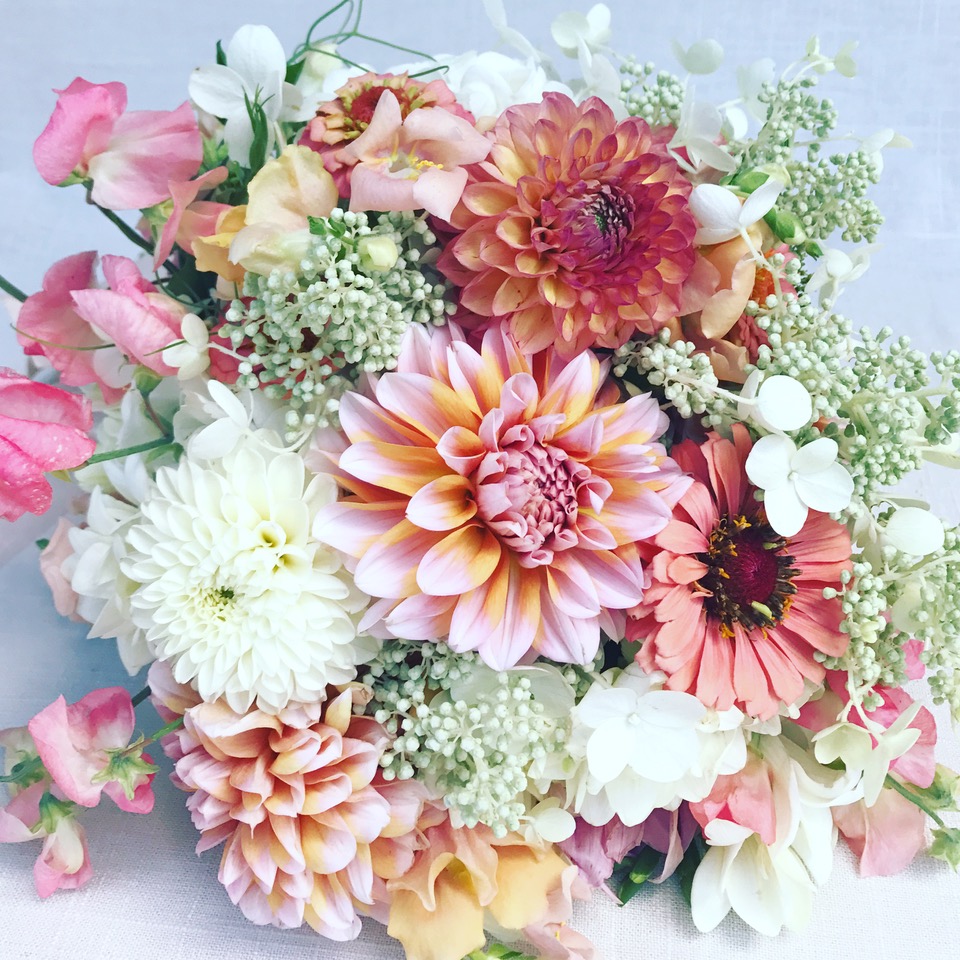Using the Language of Flowers in your Arrangements
My love for the language of flowers began about three years ago when I read a novel by Vanessa Diffenbaugh titled, “The Language of Flowers.” The subject immediately captivated me, and now I share it whenever I can.
For thousands of years and in many different cultures, flowers have had meanings attributed to them. Today, it is almost forgotten that flowers were ever a means of communication. The more you learn about the language of flowers the more you realize that it is not quite as straight forward as you might think – that each flower has one specific meaning. You'll quickly learn that it involves many intricate details, twists, and turns. As it turns out, flowers can have multiple meanings! For example, a sunflower can mean ‘haughtiness’ or ‘adoration.’ Talk about opposite ends of the spectrum! So how can we modernize a concept from the past to use today?
Dahlia - Dignity
It's important to set criteria when giving meaning to a flower. First, only use words that are positive – there’s no room for negativity with flowers! Second, there are many resources out there. As long as you can find the meaning from two different sources, it is valid to use.
While I find the topic fascinating, I also believe that using the language of flowers in arrangements enhances our work with flowers. Here are a few tips on how and why to use the language of flowers.
Reasons to use the language of flowers
Tulip - Declaration of Love
Connecting the past with the present
We live in a time when people are not just excited about the future but intrigued by the past. Ancestry, antiques, and vintage style are all hugely popular. What a perfect time to incorporate a bit of history into flower arranging.
Personalizing Arrangements
It may be a time of ancestry and vintage items, but it is also the age of Pinterest! Why not take those ‘inspiration photos’ that we all see and connect them to your client on a more personal level by adding a bit of the language of flowers?
Be unique
Using the language of flowers takes time and thought. Not all florists are going to do it. This added element to your work is something that could make you stand out from your competition.
When to start using the language of flowers
Peony - Happy Life // Almond Leaf Photography
A natural way to start using the language of flowers is to incorporate it into your daily arrangements. Once you have done it a few times, you will find that it is easy to expand into weddings and other special events. Here are three suggestions for ways to begin:
New baby
Daisy – Innocence; Stock – Happy Life; Craspedia – Good Health; Gladiolus – Strength of Character; White Carnation – Sweet and Lovely; Gypsophila – Everlasting Love.
Anniversary
Myrtle – Marriage; Carnation – Marital Bliss; Lavender – Devotion; Gypsophila – Everlasting Love; Peony – Happy Life; Red Rose – Love
Christmas
Olive Branch – Peace; Red Rose – Love; Chrysanthemum - Joy
More resources
Books and Novels
- The Language of Flowers by Vanessa Diffenbaugh
- Secret Meaning of Flowers by Brenda Jenkins Kleager
- A Victorian Flower Dictionary by Mandy Kirby
- The Secret Language of Flowers by Samantha Grey
Websites
Whether you are new to this subject or quite familiar with it, I hope you have learned something from my article and will decide to try it in your flower arranging. If I could, I would give each of you a ‘Bells of Ireland’ – Good luck!











